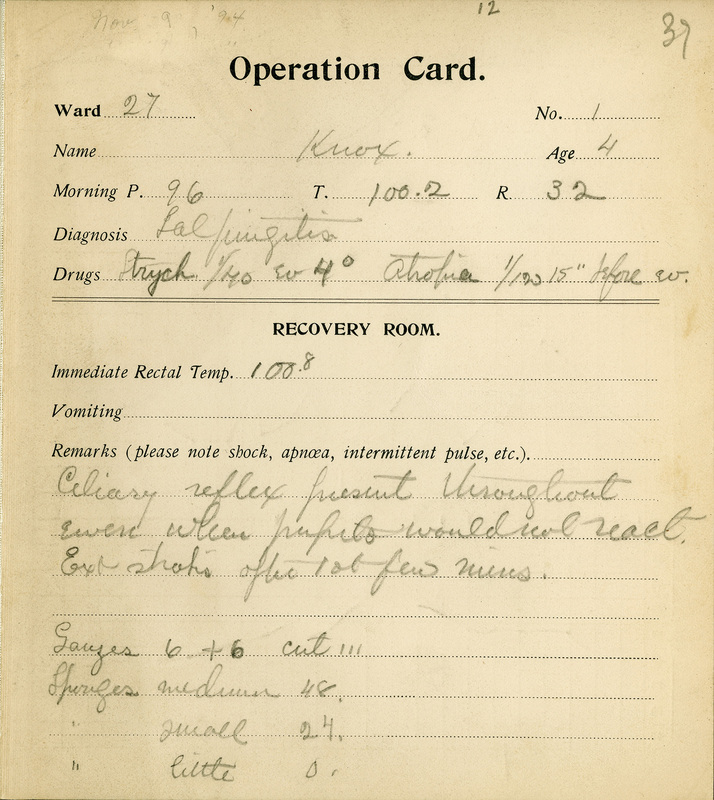Charting
First Ether Charts, 1894–1895
As a third-year medical student at Harvard Medical School, Harvey Cushing (Brigham MD famous as the "father" of the specialty of neuorosurgy) was pulled from the seats and ordered to give anesthesia to a patient about to be operated on in front of the class. Having never done anesthesia before, he was instructed to follow the directions of an orderly. The patient died. Deeply upset by this, Cushing, along with classmate, Ernst Amory Codman, resolved to improve the technique for giving ether and created the first known ether charts, (front and back of one of their charts reproduced here) carefully recording patient pulse, respiration, and temperature while under anesthetic enabling a surgeon to quickly deduce the patient’s condition. By 1903, blood pressure had been added to the chart after Cushing popularized use of the sphygmomanometer. Charting was a milestone in the development of operating room procedures.


